|
||||||||||||||||||||||||||||||||
| | ||||||||||||||||||||||||||||||||
Deck landing Training duties: January – October 1943On completion of her dockyard repairs HMS ACTIVITY was allocated for duty with Western Approaches Command as a Deck Landing Training (DLT) carrier from January 1st 1943. Most of her duties in this role involved training pilots from 768 DLT squadron who flew out to the ship on a daily basis, there were however periods when the squadron, and some front-line squadrons, embarked for periods of intensive training. Between March 12th and June 23rd 768 undertook an intensive period losing one Swordfish on the first day of operations; Lt. E.L. Russell, piloting V4311 missed all of the arrestor wires, struck the bridge, and went over the side, and was rescued by the plane guard vessel. There were four other aircraft lost during this period of training, three going over the side and one burnt out. Fulmar N4067 missed all the wires and went over the bows and into the sea on March 31st, the pilot, Sub-Lt P.A. Clarke, RMVR, was rescued OK. Sea Hurricane 1b, R4226, landed with port drift and went over the side on April 28th. Sub-Lt F.A, Morris RNVR, was OK. Martlet AJ151 flown by Sub-Lt N.M. Simon RNVR, also missed all the wires and went over the bows into the sea on June 2nd, he was recovered OK. Fulmar N4039 landed on with an oil leak, which obscured the windscreen, the plane crashed on deck and caught fire, the pilot Sub-Lt J.A. Mence, RNVR, was unhurt. In addition, there were three more Swordfish and three more Fulmar incidents involving heavy landings and barrier crashes. The next squadron to join ACTIVITY was 838 squadron equipped with four swordfish II, they embarked from RNAS Maydown, Northern Ireland on July 18th 1943 for a work up and intensive period of DLT before disembarking to RNAS Belfast on the 30th. The routine duty of providing Deck Landing Training for 768 Squadron continued until the end of August when ACTIVITY embarked 819 squadron from RNAS Eglinton on August 30th, this was a composite squadron equipped with 9 Swordfish & 3 Martlets. After four weeks of flying training, the squadron disembarked to RNAS Inskip on September 27th where the Swordfish element was to be upgraded with the installation of ASV Mk X radar. The squadron normally operated from HMS ARCHER but she was out of action from August 3rd with serious engine and machinery defects, these were to prove to be beyond economical repair and ARCHER was withdrawn from active service; her squadron was reallocated to HMS ACTIVITY for her upcoming trade protection duties.
|
||||||||||||||||||||||||||||||||
|
|
Members of the aircraft handling party on the flight deck |
Trade Protection Duties, Russian Convoy: March – April 1944
For the round trip convoys JW/RA58 to Murmansk, Northern Russia, ACTIVITY was paired with the US built escort carrier HMS TRACKER, ACTIVITY’s 819 squadron now operated 3 Swordfish and 7 Wildcats and TRACKER’s 846 squadron operated 12 Avengers and 7 Wildcats.
The outbound convoy JW58 departed from Loch Ewe, Western Scotland on March 26th 1944 and ACTIVITY and TRACKER joined on the 29th. The enemy was engaged on the 30th when Wildcats from ACTIVITY, FN122 (‘P’) flown by Lt J.G. Large, and FN135 (‘Q’), flown by Sub-Lt R.K.L. Yeo RNVR, intercepted and shot down a Ju88 at position 67°0'N 3°9'W. The next day 819s Wildcats destroyed two more enemy aircraft, both were long range reconnaissance Fw200s; JV522 (‘R’) and JV391 ('S') shot one down at 69°29' N 0°27' W and a second later that day at position 70°20'N 1°30'W. A Bv138 seaplane was also shot down on the evening of the 31st by Wildcats from both carriers.
The month of April started with the loss of one of 819s Wildcats, FN122 ('P') suffered an engine failure on take off and ditched, the pilot Sub Lt. WG Bowles RNZNVR was recovered OK. Wildcats FN136 ('T') 819 squadron and JV512 of 846 squadron shot down a Bv138 at 72°37'N 9°50'W.
The first U-Boat detected by a Swordfish of 819 was U-288, sighted on the surface on April 3rd, Lt. S Brilliant and his crew, Sub Lt. H Chadwick and P.O. J Perry, flying in LS373 (‘C’) came under heavy anti aircraft fire and called for assistance. They were joined on the scene by Avenger FN869 ('4G') and Wildcat JV512 from TRACKER’s 846 squadron and combined depth charge and rocket attacks were carried out. Despite evasive manoeuvres U-288 was sunk in position 73°44'N 13°04'E in the Barents Sea southeast of Bear Island. Lt. S Brilliant, Sub Lt. H Chadwick were both awarded the DSC, while P.O. J Perry was awarded the DSM for this action.
Aircraft from ACTIVITY also assisted in sinking U-355 and damaging U-362, U-673 & U-990. The destruction of the enemy reconnaissance aircraft made it impossible for the submarines to receive accurate position information about the convoy’s whereabouts and scuppered a carefully laid trap. Accompanying the outbound convoy of 37 merchant vessels was the American warship USS MILWAUKEE that was to be handed over to the Russian Navy under Lend-lease agreements on arrival at Murmansk. All vessels reached Murmansk without loss on April 4th. ACTIVITY and TRACKER detached from the convoy and anchored in Kola Inlet.
The return convoy RA58 (comprising the 38 empty ships of convoy JW57) left Murmansk on April 7th and arrived at Loch Ewe on April 14th without incident. HMS ACTIVITY left the convoy on the 12th and proceeded to Scapa Flow. During the round trip, ACTIVITY's aircraft completed 67 flying hours.
819 squadron parted company with HMS ACTIVITY on April 13th when the swordfish and squadron personnel were disembarked to RNAS Hatston. The squadron’s five Wildcats were retained on board to form part of the fighter flight of 833 squadron, which was due to reform aboard ACTIVITY on April 26th with an equipment strength of 7 Wildcats (2 ex 816 & 5 ex 819 squadron) & 3 Swordfish II (ex ‘F’ flight 836 squadron).
The four Swordfish of 836F flight embarked on April 17th and ACTIVITY put to sea on the 19th in company with HMS DIADEM, HMS FENCER, 14 Home Fleet destroyers and 4 Canadian frigates attached to Home Fleet, for passage to Kola Inlet. This was Operation EZ, the ships were to bring Russian naval personnel from Murmansk to man ships being transferred to Russia under the lend-lease scheme. The mercantile NEA HELLAS also sailed for Murmansk but had to return to the UK soon after departure due to mechanical problems. The warships all arrived at Kola Inlet on the 24th. Two of the Swordfish were lost on passage; the first lost its hook while attempting to land on after a patrol and went over the side on the 22nd, the other ditched in the sea when it discovered that its hook was defective on the 24th. HMCS WKSKESIA rescued the crews of both aircraft.
ACTIVITY and
FENCER sailed for the return leg with the escort force
of convoy RA59, sailing on April 28th. Since the merchantman
designated to carry the personnel was not available, they embarked
in the warships, ACTIVITY accommodating 19 US Navy crewmembers for
passage.
The return passage was more eventful, on May 1st Swordfish LS280
attacked a U-Boat while Wildcats FN135 and JV332 attacked and shot
down a Bv138 German reconnaissance plane at position 72°20'N 9°13'E.
The following day another Swordfish, LS160 made an attack on a
second U-Boat. ACTIVITY detached from the convoy on May 4th with the
Destroyers MARNE, MATCHLESS, METEOR, MILNE and MUSKETEER as escort
she proceeded to the Clyde.
|
|
HMS ACTIVITY at anchor at Greenock. Three Swordfish aircraft can be seen on the flight deck with their wings folded, and the tail of a Wildcat can be seen behind the island structure.. Image © IWM (A 21849) |
Trade Protection Duties, Western Approaches: May – August 1944
HMS ACTIVITY entered a Clyde shipyard on May 6th for a five-day period of defect rectification. Captain C Wauchope RN CBE, DSC relieved Captain Willoughby as commanding officer on May 18th. On leaving the dockyard she was assigned to duties in the SW approaches and Bay of Biscay in company with TRACKER and VINDEX and 1st, 3rd, 4th 6th and 9th (Canadian) Support Groups. The carriers were to provide air cover and conduct anti submarine sweeps to prevent U-Boats interfering with preparations for the upcoming invasion of Normandy (Operation NEPTUNE). For this task, they operated in conjunction with aircraft of 19 Group RAF Coastal Command.
Air cover was provided for convoys OS78/ KMS52, an outward joint convoy, bound for Gibraltar and West Africa 22nd-23rd May. Then the Gibraltar to Liverpool joint inward Convoy SL158/ MKS 49 from 28th May. On leaving this convoy ACTIVITY returned to her A/s sweeps before switching to provide cover for the joint outward Convoy OS78/ KMS52 on June 2nd and joint inward Convoy SL 159/ MKS50 from June 3rd. ACTIVITY accompanied this Liverpool bound convoy into home waters before proceeding to the Clyde, arriving there on June 10th. 833 Squadron were put ashore to RNAS Machrihanish while the ship embarked stores and fuel; only one flying incident occurred during this period, one of her Wildcats, JV345, drifted while landing on and its starboard undercarriage collapsed June 1st.
Her aircraft re-embarked June 16th when another Wildcat, JV401, stalled while embarking from Machrihanish, swung on landing, and came to rest in the starboard nets. ACTIVITY sailed to rendezvous with the inward joint convoy SL162/ MK53 from June 20th; she accompanied this Liverpool bound convoy into home waters before proceeding to the Clyde, arriving there on July 11th. There were three barrier crashes during this voyage; two Wildcats - JV444 on July 2nd, JV522 on the 4th, and one Swordfish LS452 on the 7th. ACTIVITYs next deployment was to escort the military convoy KMF33 from the UK to Gibraltar. The convoy sailed from the Clyde on July 18th, and arrived at Gibraltar on the 28th.
Sailing from Gibraltar on August 4th ACTIVITY escorted the return
convoy MKF33 until the 10th before breaking off to cover outward
joint Convoy OS86/KMS60 from August 11th, and inward joint convoy
S167/ MKS58.from the 21st; she detached from the convoy on the 27th
and proceeded to the Clyde. Three of 833 squadron’s aircraft
suffered barrier crashes during this period; Wildcats JV433 and
JV533 on August 6th, and Swordfish LS280 on the 17th. This was the
end of ACTIVITYs role as a convoy protection carrier; she was to be
reassigned to duty as a ferry carrier. On September 7th the Wildcats
of 833 squadron departed for RNAS Eglinton, Northern Ireland, the
Swordfish disembarked to RNAS Maydown, Northern Ireland, and
rejoined as 836 as F flight.
|
|
A Swordfish of 824 taking off for a patrol seen ACTIVITY’s bridge. On the left, looking aft, is Major W G Aston, RM, Commander Flying, and (right) Captain Guy Willoughby. Image © IWM (A 18264) |
Ferry Duties: UK to Ceylon and back. August – December 1944
ACTIVITY proceeded to RNAMY Belfast to embark her ferry load of Avengers and the personnel of 854 squadron for ferrying to the Far East. She sailed on the 10th, possibly in company with HMS, also ferrying Avengers and personnel to the Far East; calling at Gibraltar, Alexandria and Aden before reaching Cochin, S. India on October 7th. After disembarking 854 squadron personnel to RNAS Cochin, ACTIVITY continued on to Trincomalee, Ceylon on October 23rd to disembark stores and passengers. She spent the next week storing ship and embarking passengers in preparation for the return voyage to the UK. At the beginning of November she returned to Cochin to embark more passengers for the return voyage to the UK.
The personnel of 810 squadron embarked on the 3rd, followed by those of 815 squadron on the 4th; both squadrons had left their Barracuda aircraft at the nearby RNAMY Coimbatore after a the decision had been taken to replace Barracuda squadrons with ones equipped with Avengers in the Pacific Theatre. After loading, she sailed for the UK calling at Port Said and Gibraltar on route. On November 16th she joined the CVE HMS EMPEROR in convoy MKF36 which departed Port Said bound for Liverpool. She left the convoy in the NW Approaches on November 29th and took passage to Greenock. She arrived back on the Clyde on November 30th and after unloading, entered a Clyde dockyard for defect rectification on December 5th.
Reallocation to the East Indies Fleet: January – August 1945
On completion of this defect rectification work ACTIVITY was reassigned to the East Indies Fleet for duty as a ferry carrier; her pennant number being Redesignated R301. She proceeded to Portsmouth for further dockyard work, including a spell in dry-dock, arriving there on December 21st. On January 17th 1945 she sailed for Belfast arriving there the following day to embark a ferry load of replacement aircraft.
ACTIVITY in company with the CVE HMS RULER sailed with convoy KM39 departing from the Clyde on January 29th for Gibraltar. On February 2nd the carriers detached from the convoy and proceeded to Alexandria, arriving there on the 9th. RULER required dockyard assistance on arrival to repair damage suffered to her flight deck, ACTIVITY proceeded alone. After passage through the Suez Canal she called at Aden to refuel; she arrived in Colombo on February 20th and unloaded her stores and passengers. [It is unclear whether she disembarked her ferry load here because the following day her commanding officer received orders to make a ferry trip to Sydney, Australia, delivering the first of two loads of replacement airframes for use by the British Pacific Fleet].
Whilst in the Indian Ocean en route to Australia ACTIVITY was involved in the rescue of a party of survivors from the American liberty ship the S.S. PETER SILVESTER. She had been sunk by the German submarine U862 on Tuesday 6th February 1945 at 2215 hours in position 3º 19”S, 99º 37”E, 700km from Fremantle, Australia. [The PETER SILVESTER was the last allied ship to be sunk by enemy action in the Indian Ocean.] A lifeboat was sighted in position 26º 48”S, 101º 58”E at on February 28th, twenty-two days and 580 miles from the position of the sinking; 20 survivors were taken aboard.
Extract from signal raised by Commander E.J.R. North about the event:"At approximately 1210 on Wednesday 28th February 1945, ship was steering 132º speed 15 knots, when the Officer of the Watch (Lieutenant L.L.P. Sinclair, M.H.R.) reported sighting an object bearing 123º &º#186;186;istance about 8 miles. This at first, had the appearance of the coning tower of a submarine, but, as it appeared to be very lively in the moderate/average sea and swell was running, I considered the subject to be a small boat under sail.
Course was altered at 1220 in order to close and investigate, and the object was soon recognized as a ship’s lifeboat with red sails. The occupants of the boat had seen us, for, about this time they fired off Very lights and red flares. At 1240 I stopped the main engines and placed the ship to windward of the lifeboat which then came alongside, and 20 officers and men from the American S.S. “PETER SILVESTER” were taken on board. At 1308 the lifeboat was cast off and sunk by twin 4 inch, and the ship proceeded on her original course."
The survivors were put ashore at Fremantle on March 3rd, ACTIVITY continuing on to Sydney. After delivering her ferry load ACTIVITY sailed form Sydney on March 24th bound Colombo carrying passengers and stores. From Colombo she proceeded to Cochin for a second ferry load (Corsairs) which were loaded on April 20th. This load was destined for Brisbane, and was offloaded there on VE Day, May 8th.
On May 26th Captain Wauchope died as a result of illness and Commander EJR North RNR (the ships executive officer) assumed command. ACTIVITY was to remain on ferry duty until after V-J Day, mainly making runs from Cochin to Colombo.
The reoccupation of Singapore and the repatriation of former POWs: September – October 1945
After the end of hostilities on August 15th 1945, attention turned to the reoccupation of former British territories held by Japanese forces. ACTIVITY followed behind Force ‘N’ which Sailed from Trincomalee and Rangoon on August 31st bound for Singapore; ACTIVITY departed Colombo on September 1st for Operation TIDERACE; HMS SUSSEX lag Officer Rear Admiral C.S. Holland, CB) , with destroyer VIGILANT, was to join with a convoy consisting of 26 L.C.I. (L), RFA DEWDALE, Hospital Ship AMARAPOORA, and HMS KEDAH (H.Q. Ship of Rear Admiral J.A.V. Morse, CB, CBE, DSO, Flag Officer Malaya designate) HMS SUSSEX and Force ‘N’ arrived off Singapore on Tuesday, September 4th. At 11:30am the next day HMS SUSSEX made her way into Singapore Harbour; allied bombing had taken its toll on Singapore's harbour facilities, and numerous wrecks blocked the approaches but SUSSEX arrived safely at Empire Pier. Berthing parties were put ashore to assist in making fast other ships carrying food and medical supplies. The surrender of Japanese forces in Singapore was accepted onboard SUSSEX later that day.
ACTIVITY entered the harbour on the 6th carrying more supplies and the personnel of the port party who were to occupy and administer the docks. On the 11th Force 61, (CVEs AMEER EMPEROR, KHEDIVE, and STALKER, Battleships NELSON and RICHELIEU and the Cruiser ROYALIST) anchored in Singapore Roads between 0930 and 1030; later the order was given for part of the force to proceed into the harbour. The CVEs EMPEROR, HUNTER, KHEDIVE and STALKER anchored in Keppel Harbour, Singapore. AMEER and EMPRESS remained with over 90 ships (including 70 RN and RIN warships, 3 Royal Fleet Auxiliaries, 3 hospital ships and 14 merchant vessels) in Singapore Roads. On September 12th.Lord Louis Mountbatten accepted the surrender of 680,000 Japanese soldiers in South East Asia in the Council Chamber of the Singapore Town Hall in the presence of military representatives of the United States, India, Australia, China, France and Holland.
After unloading her supplies and assisting with their distribution ACTIVITY began embarking former POWs who were fit enough to make the voyage to Ceylon and she sailed for Trincomalee on the 15th. On arrival back in Ceylon, she received orders to sail for the UK. After disembarking her passengers from Singapore the crew prepared to sail for the UK. With new passengers embarked, she sailed from Trincomalee on September 22nd for the Suez Canal.
HMS ACTIVITY arrived back in the Clyde on October 20th 1945, and was stood down from active service; after her passengers disembarked and was paid off. Work began straight away to de-store her and prepare her for the reserve fleet. She was transferred to Category B reserve status in the Clyde on January 30th 1946 and put up for disposal.
Disposal:
ACTIVITY was sold into merchant service on March 25th 1946; she was purchased by Glen Lines shipping company and towed to the yard of Palmers at Hebburn-on-Tyne for conversation into a Glenearn Class merchant vessel. On completion she was renamed the M.V. BRECONSHIRE and commenced operations in September 1947 on the company’s Far East Conference operations, carrying freight and passengers on the UK-China and Japan-UK routes with ports of call at Yokohama , Hong Kong, Shanghai , Singapore, Port Swettenham and Penang. She made her final voyage n 20th April 1967 sailing from Kobe en-route to Mihara, Japan where she was to be broken up, starting 24 April 1967
|
|
The M.V. BRECONSHIRE |
Notes:
[1] The first American built aircraft to enter RN service were the Grumman Avenger and Wildcat but the Admiralty changed their names to Tarppn and Martlet. The name 'Tarpon’ was used for the Mk I and II, while ‘Martlet’ was used through Mk I to IV; from January 1944 the Admiralty reverted to its American names of Avenger from Mk III and ‘Wildcat’ from Mk V to avoid confusion.
Content revised: 31 October 2021
Sources used in compiling this account:Click here for a list of Primary sources
Additional sources: Fold3.com various documents including; Admiralty War DiariesMiscellaneous documents
|
Add Comment
|




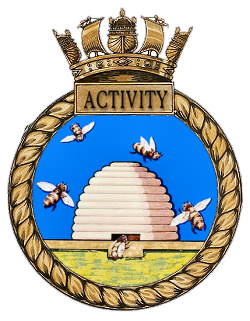

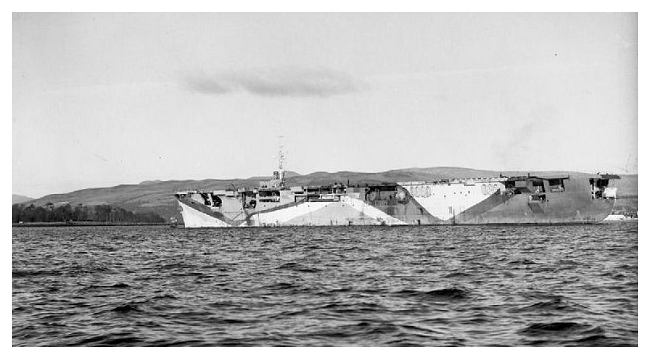
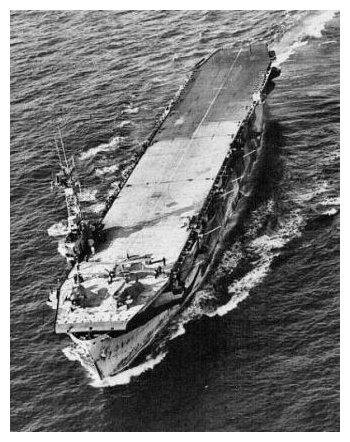
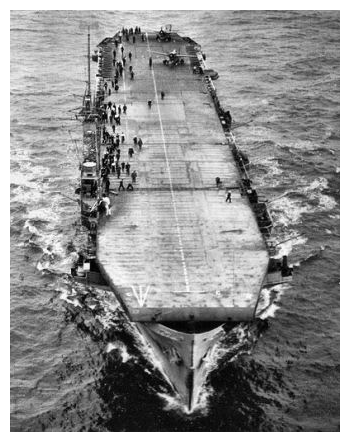
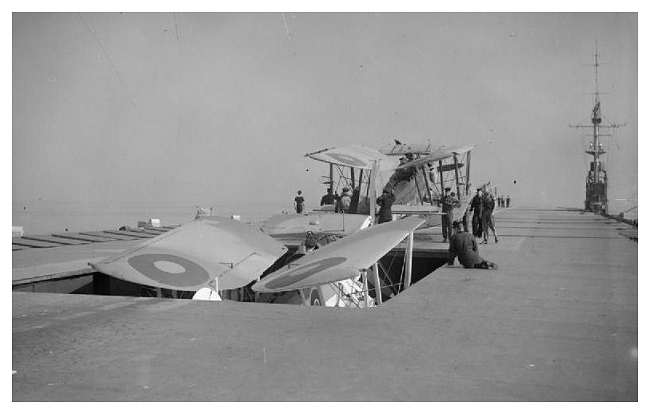

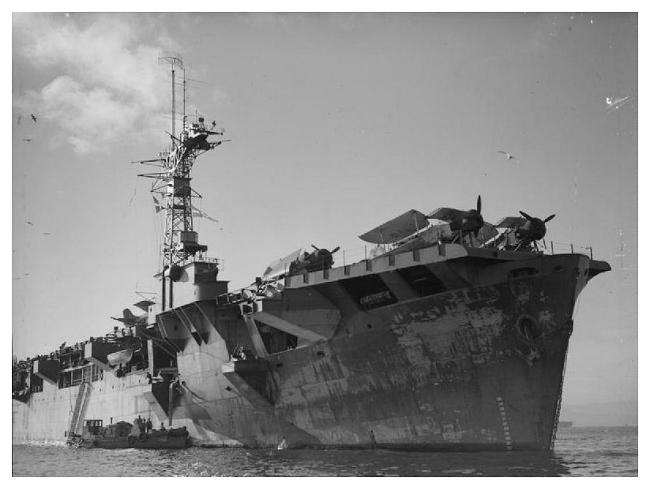
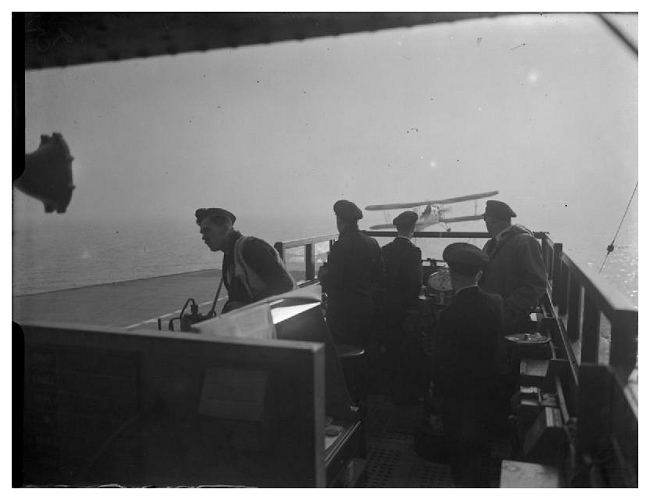

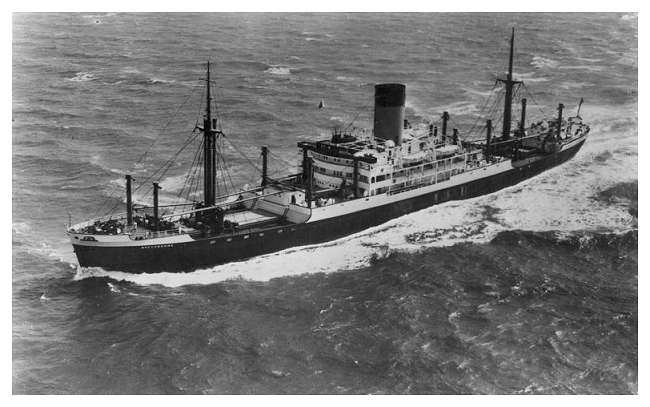
Comments (4)
Photos of some crew attached
My great uncle possibly served on the activity, he did fly in Swordfish and we know did the run to Murmansk and after the war ended helped repatriate pow’s from the Far East. So this fits. His name was Petty Officer Mark ‘Fred’ Stratford. Any information would be gratefully received.
Hello. Do you have a list of crew members? My partners father was called Humphrey Waine.
Thankyou. Barry
Have you got a list of the crew? My partners father was on this ship. His name was Humphrey Waine.
Thannks. Barry